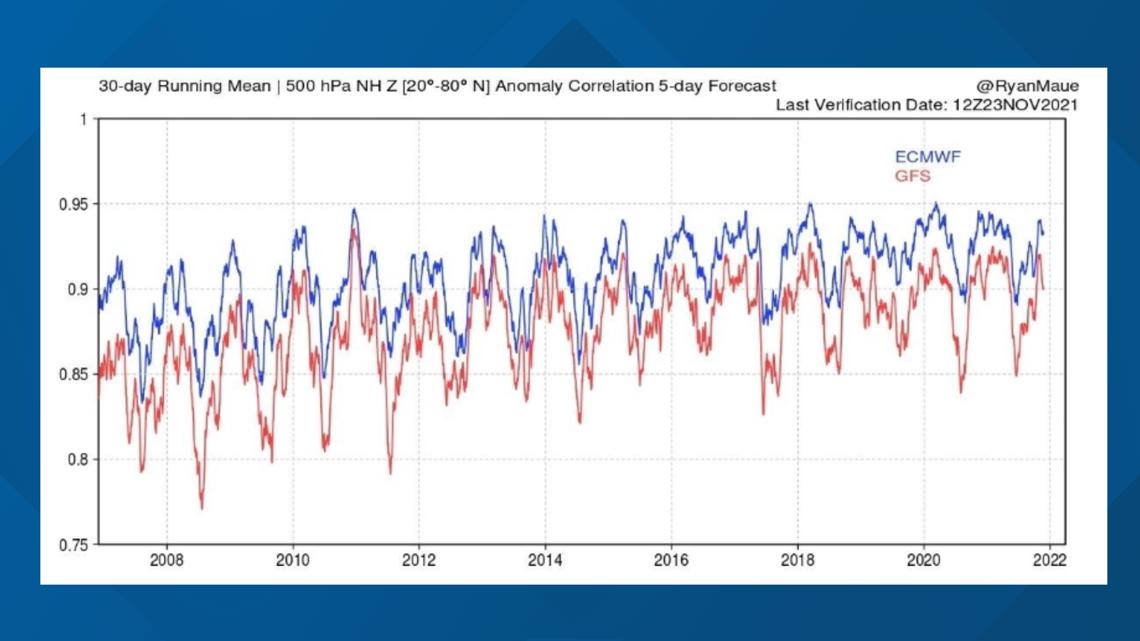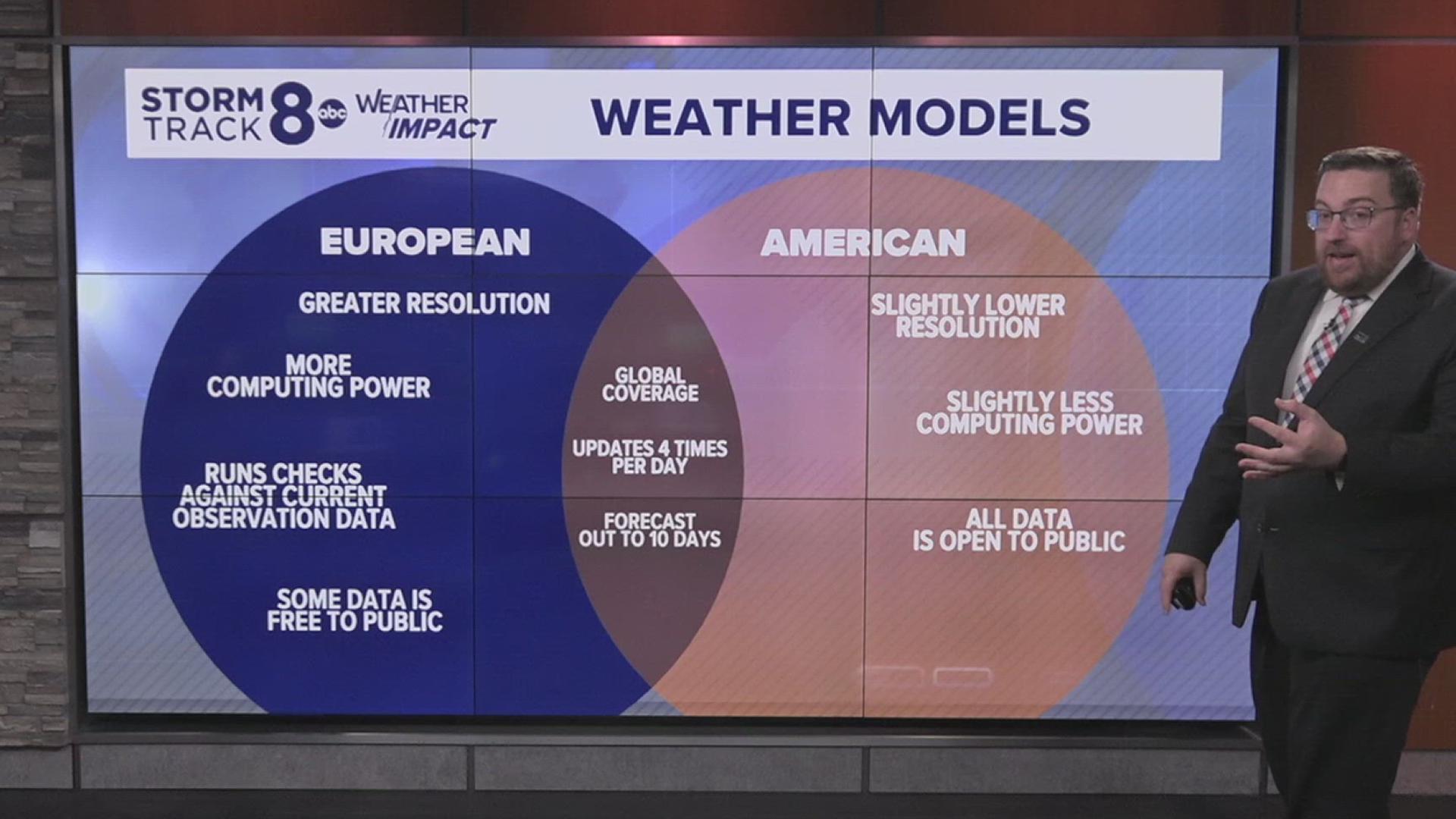MOLINE, Ill. — Frequent followers of weather will often hear meteorologists talk about different weather forecast models, especially the European and American forecast models.
These two models, known as the ECMWF (European Center for Medium-Range Weather Forecast) and the American GFS (Global Forecast System) are the most widely used today by meteorologists across the globe. Con from Hooppole, Illinois, wondered what the differences are between the two models. Let's dig in!
What they have in common
Both the ECMWF and GFS provide global forecasts, making them the most commonly used forecast models by meteorologists everywhere. These two forecast models also serve as a base for other, finer-resolution regional models to work from.


Both models are also projects and owned by their respective governments, not private companies. Due to the sheer size of computing power required to run these models, it's more difficult for private industry to invest in this technology.
Lastly, both models produce weather forecasts for all of the major weather elements: sky conditions, air temperature, precipitation, wind, pressure, relative humidity, and visibility in the medium-range, or ten days into the future.
Key differences
Resolution: The ECMWF model's resolution is 9km or about 5.5 miles. The GFS has a resolution of 25km or roughly 15.5 miles. This resolution is the distance between two points on a grid that the weather model uses. The smaller the number, the better the resolution/quality of a forecast. Think of this like the number of pixels in your cell phone camera.
Forecast Periods: This is how many hours ahead you can see in a given model run. With the ECMWF, it is 1 hour, while the GFS produces 3-hourly forecasts.
Equations: Both models use different equations to predict weather patterns. The ECMWF is considered a non-hydrostatic weather model, meaning that it uses altitude in the forecast to more accurately take into account the influence of the terrain on weather. The GFS however is a hydrostatic model, using atmospheric pressure instead of altitude. In the end, this means the GFS often performs worse at higher resolutions since the model has trouble with topography and terrain.
Cost: Because the ECMWF is a more complex model, it costs more to operate. Most apps and websites that have access to this model data charge a fee to view it. Meanwhile, the GFS is completely free and open to the public.
Which one is more accurate?
Both models can reliably tally up some wins from time to time. The ECMWF seems to be a bit more consistent when it comes to predicting overall weather on my parameters in the last decade. However, the GFS has been better at reporting severe weather and other extreme weather events. It certainly has more work to do.
Both models have an accuracy of about 95-96% for up to 12 hours into the future, 85-95% for three days, and 65-80% for up to 10 days in the future.


Have a question that you would like me to answer for an upcoming Ask Andrew segment? Submit it, here!

